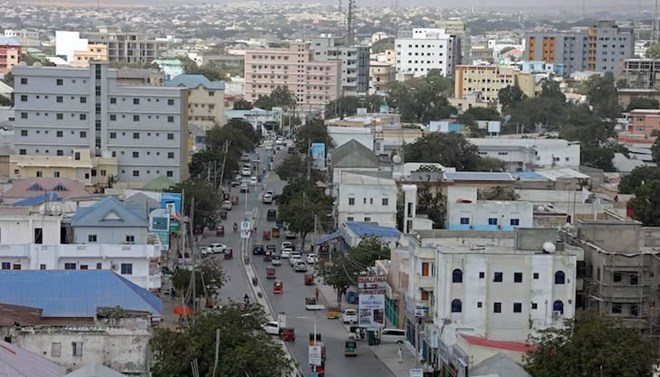Thursday January 4, 2024
By Hassan Ali Khaire
The long-suffering East African country will accumulate further debt arrears unless it undertakes bolder reform, says former prime minister Hassan Ali Khaire.

After decades of conflict, Mogadishu reached a historic milestone by attaining IMF/World Bank debt relief. REUTERS/Feisal Omar
It is said that a cow with no tail should not try to chase away flies. This African cautionary tale warns us to match our ambitions with the resources and tools we have at our disposal.
As Somali policymakers, we ignored this old lesson and embarked on an ambitious reform agenda under the auspices of an IMF debt relief programme. We intentionally did this without having the necessary resources or required environment because the enhanced Heavily Indebted Poor Countries (HIPC) initiative offered us two complementary rewards. First, a route out of debt distress, and second, policy discipline, as the programme would support us in formulating robust policy options, which we could then use as an anchor to drive comprehensive reforms.
Identifying challenges
On assuming office as prime minister in February 2017, we were struggling with satisfying the four basic prior actions and 11 structural benchmarks required under SMP I, and there were signs we were unprepared for an IMF programme due to our multifaceted challenges. However, I was determined to persevere with the programme, amid an absence of state bureaucracy required to deliver on such an ambitious project.
Within 45 days in office, we organised the whole government apparatus under four pillars: economic development, inclusive politics, social affairs, and security and justice. This enabled us to efficiently use the few experts we had, while strengthening cross-departmental learning, collaboration and coordination.
The IMF programme was nested within the economic development pillar which had membership from 13 stakeholder ministries and the central bank. I chaired this pillar’s weekly meetings throughout my premiership, driving the reform process forward and ensuring accountability. We also secured buy-in for the reform process from all concerned stakeholders, guaranteeing the programme remains on track even if our team left office.
Massive setbacks
Unfortunately, we encountered critical matters to contend with besides the IMF programme. On October 14, 2017, a terror attack rocked Mogadishu, resulting in death, injury and untold damage in a section of the city. Moreover, prolonged and recurring climate-related shocks in the form of droughts in 2016/2017 and 2019/2020, ravaged the entire country.
The worst locust infestation in a quarter of a century struck in June 2019, further exacerbating a fragile humanitarian situation. Then Covid-19 came at the worst possible time and we were faced with a series of unfathomed crises.
Despite these setbacks, we successfully navigated through three comprehensive and challenging SMPs (SMP II: May 2017 – April 2018; SMP III: May 2018 – April 2019; and SMP IV: June 2019 – July 2020), containing more than 50 structural benchmarks in addition to numerous quantitative performance indicators.
Ultimately, our steadfastness for reforms and team tenacity paid off when, in March 2020, the IMF and the World Bank’s IDA agreed we had met the requirements to qualify for debt relief (under HIPC ‘Decision Point’). We thereafter embarked on decentralising our structures by strengthening key institutions such as the central bank and the ministry of finance, allowing us to facilitate clear pathways towards HIPC Completion Point.
Substantial risk
It is extremely pleasing to see that our external debt stock is reduced and relatively manageable at around 6% of GDP, presenting an opportunity for Somalia to rejoin the global economic and financial system after a long hiatus. However, there are substantial risks of falling back into accumulating debt arrears unless we significantly up our game and put in place bolder reform measures.
Debt relief or not, the underlying economic fundamentals of our country remain the same. The same resource gaps exist; our fiscal space is non-existent, domestic savings are absent and cannot meet the massive demand for domestic investments, and we have a huge trade deficit.
I strongly urge our friends and international partners to support us at this critical juncture
Basic public services are lacking, and we need social safety net programmes to boost human capital and resilience against recurring shocks. Most importantly, our debt-carrying capacity is dismally weak. HIPC Completion Point implies that our country will most likely not have access to future IDA grants, meaning new concessional borrowing is the only option.
At the moment, the federal government is unable to cover its recurring expenditures and running costs with the amount of revenues it generates. The recent plans to deploy new army personnel and the recruitment of 3,000 teachers, while essential, will exacerbate current finances. My worry is that the government will start acquiring new debt to cover its current expenditure, eventually jeopardising years of reform efforts.
It will be unfortunate if we do not learn from the experiences of previous HIPC Completion Point graduates, many currently in some form of debt distress (out of the 36 countries, 17 in moderate debt distress risk, 13 in high debt distress risk and five in debt stress).
To fully leverage the debt relief, I strongly urge that we remain steadfast in our efforts to improve domestic revenue mobilisation and public financial and debt management while strengthening integrity, transparency and accountability measures.
I also strongly urge our friends and international partners to support us at this critical juncture so we do not fall back into the darkness of debt default and exclusion from the international financial and monetary system.